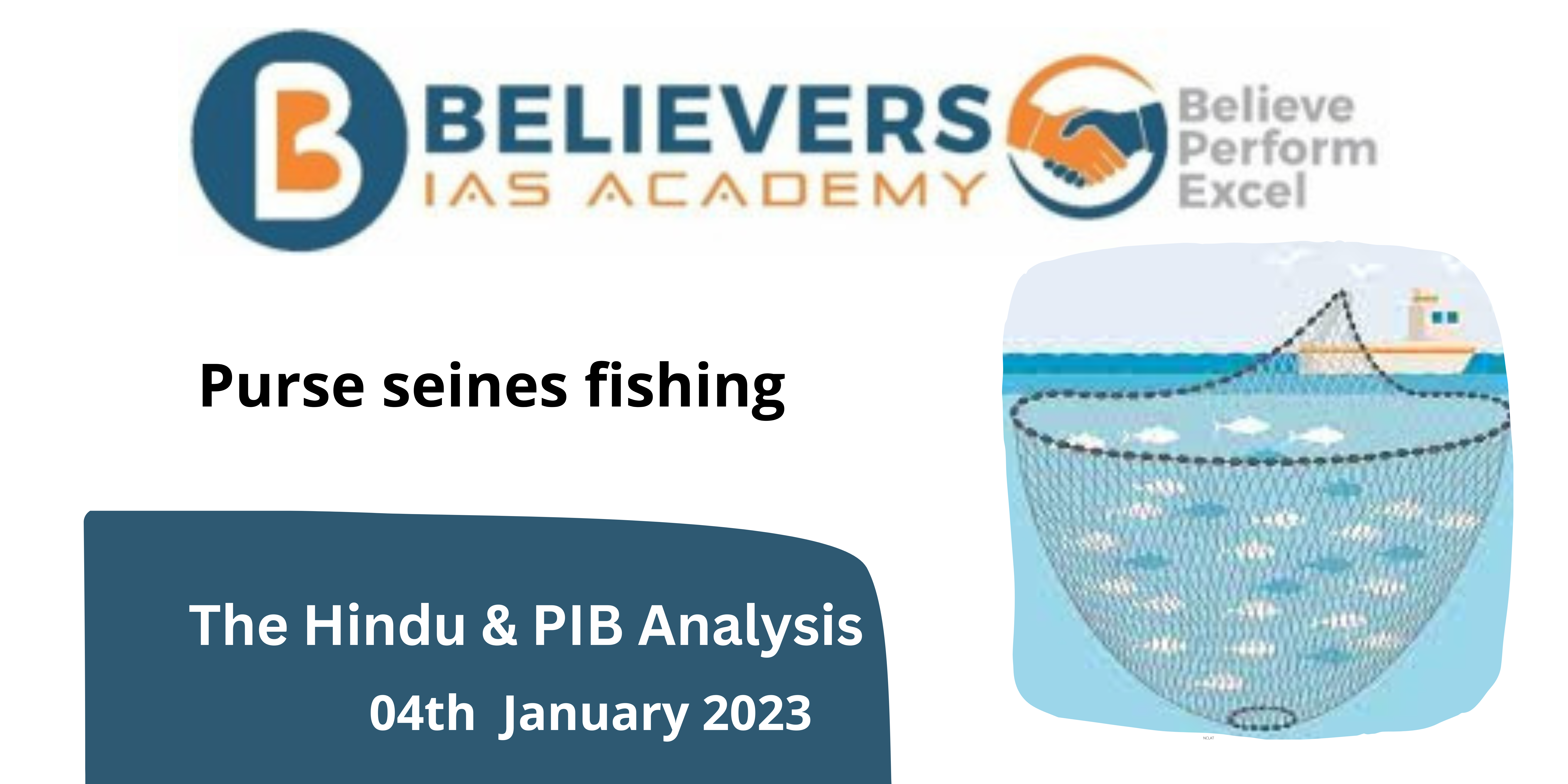Purse seines fishing
#GS-03 Agriculture
For Prelims
Purse seines:
- A purse seine is a large wall of netting deployed around an entire area to catch a school of fish.
- The seine is fitted with floats along the top line and a lead line threaded through rings along the bottom.
- Once a school of fish is located, a smaller boat (skiff) encircles the school with the net.
- The lead line is then pulled in, “pursing” the net closed on the bottom which prevents the fish from escaping by swimming downward.
- These are generally used in the open ocean to target dense schools of single–species pelagic (midwater) fish such as tuna and mackerel.
For Mains
Advantages of Purse seines:
- Purse-seine fishing in open water is generally considered to be an efficient form of fishing.
- The net does not come into contact with the seabed and hence can have low levels of bycatch (accidental catch of unwanted species).
- Purse seines are highly adaptable and can reach more than 6,500 ft (2,000 m) in length and 650 ft (200 m) in depth, and the size can be varied according to the vessel, mesh size, and target species.
Concerns:
- Purse seining is a non-selective fishing method which means it captures everything that it surrounds, which can include protected species like turtles.
- It also affects the livelihood of the smaller traditional fishermen since, affluent purse seine fishermen on mechanised boats end up catching hundreds of tonnes of fish.
What can be done:
- Purse seine fishing could be allowed outside 12 nautical miles from the coast for 15 days in a given month except during the 60-day uniform fishing ban period.
- Government can fix a maximum number of boats that can go to sea for fishing based on the availability of fish.
- Only those who don’t use mechanised boats and use small boats should be allowed to operate within five nautical miles.
Source “SC raises concern on small fishermen hit by purse seine nets“




